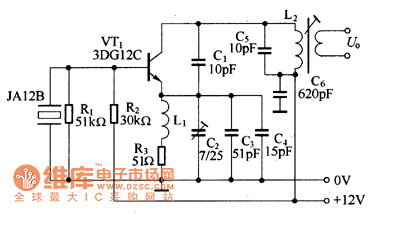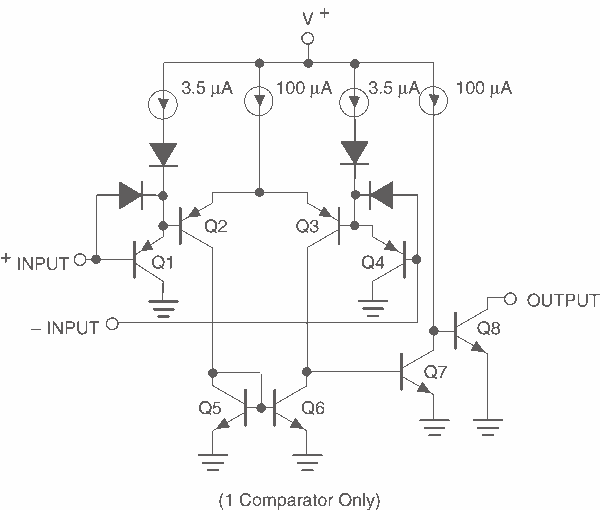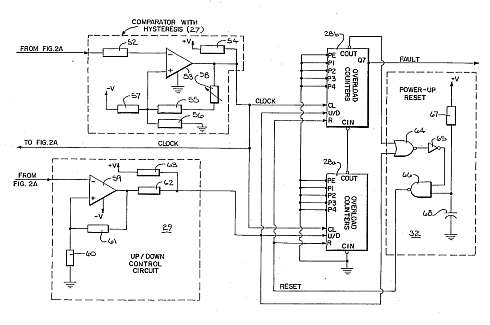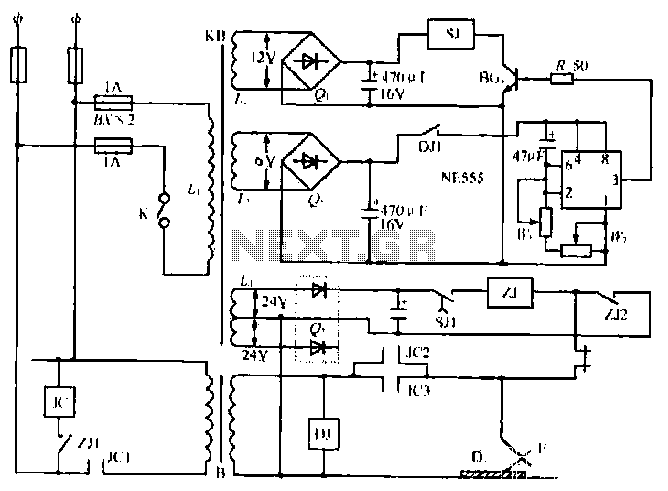
Simple Headlight Reminders circuit
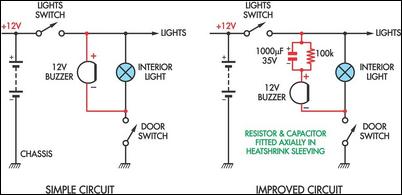
Two headlight reminder circuits are designed for easy installation and operation based on the KISS (Keep It Simple Stupid) principle. The basic circuit consists of a 12V piezo buzzer connected between the lights circuit and a door switch. The buzzer activates when the lights are left on and a door is opened. However, a drawback of this simple design is that the buzzer can be irritating if the door needs to remain open while the lights are on. The enhanced circuit addresses this issue by incorporating a 1000µF capacitor and a parallel 100kΩ resistor in series with the buzzer. In this configuration, when a door is opened, the buzzer emits a brief sound as the 1000µF capacitor charges. The 100kΩ resistor serves to discharge the capacitor when the lights are turned off.
The two headlight reminder circuits illustrate a straightforward approach to preventing battery drain by providing an auditory alert when vehicle lights are inadvertently left on. The initial circuit design utilizes a 12V piezo buzzer, which is a compact and efficient sound-producing device. This buzzer is wired in such a way that it becomes active when the door switch is engaged. The simplicity of this system makes it accessible for installation in various vehicles, requiring minimal components and tools.
In the improved circuit, the addition of a 1000µF capacitor plays a crucial role in controlling the buzzer's operation. When the door is opened, the capacitor begins to charge, allowing the buzzer to emit a short sound rather than a continuous tone. This design modification significantly enhances user experience by reducing annoyance while still providing an effective reminder. The 100kΩ resistor is strategically placed in parallel with the buzzer to ensure that the capacitor discharges when the lights are turned off, resetting the system for future use.
Overall, these circuits exemplify practical engineering solutions to common automotive issues, balancing simplicity with functionality. The incorporation of basic electronic components, such as a piezo buzzer, capacitor, and resistor, demonstrates how effective designs can be achieved without complex circuitry, making them suitable for a wide range of applications in automotive electronics.These two headlight reminder circuits are easy to install and operate on the KISS (Keep It Simple Stupid) principle. The simple circuit involves adding just a 12V piezo buzzer between the lights circuit and a door switch.
The buzzer sounds if the lights are left on and you open a door. The disadvantage of this simple circuit is that it`s annoying to have the buzzer sound continuously if you want to leave the door open while the lights are on. The improved circuit overcomes that problem by adding a 1000µF capacitor and a parallel 100kO resistor in series with the buzzer.
Now, when a door is opened, the buzzer gives a brief burst of sound only, while the 1000µF capacitor charges. The 100kO resistor discharges the capacitor when the lights are switched off.. 🔗 External reference
The two headlight reminder circuits illustrate a straightforward approach to preventing battery drain by providing an auditory alert when vehicle lights are inadvertently left on. The initial circuit design utilizes a 12V piezo buzzer, which is a compact and efficient sound-producing device. This buzzer is wired in such a way that it becomes active when the door switch is engaged. The simplicity of this system makes it accessible for installation in various vehicles, requiring minimal components and tools.
In the improved circuit, the addition of a 1000µF capacitor plays a crucial role in controlling the buzzer's operation. When the door is opened, the capacitor begins to charge, allowing the buzzer to emit a short sound rather than a continuous tone. This design modification significantly enhances user experience by reducing annoyance while still providing an effective reminder. The 100kΩ resistor is strategically placed in parallel with the buzzer to ensure that the capacitor discharges when the lights are turned off, resetting the system for future use.
Overall, these circuits exemplify practical engineering solutions to common automotive issues, balancing simplicity with functionality. The incorporation of basic electronic components, such as a piezo buzzer, capacitor, and resistor, demonstrates how effective designs can be achieved without complex circuitry, making them suitable for a wide range of applications in automotive electronics.These two headlight reminder circuits are easy to install and operate on the KISS (Keep It Simple Stupid) principle. The simple circuit involves adding just a 12V piezo buzzer between the lights circuit and a door switch.
The buzzer sounds if the lights are left on and you open a door. The disadvantage of this simple circuit is that it`s annoying to have the buzzer sound continuously if you want to leave the door open while the lights are on. The improved circuit overcomes that problem by adding a 1000µF capacitor and a parallel 100kO resistor in series with the buzzer.
Now, when a door is opened, the buzzer gives a brief burst of sound only, while the 1000µF capacitor charges. The 100kO resistor discharges the capacitor when the lights are switched off.. 🔗 External reference
Warning: include(partials/cookie-banner.php): Failed to open stream: Permission denied in /var/www/html/nextgr/view-circuit.php on line 713
Warning: include(): Failed opening 'partials/cookie-banner.php' for inclusion (include_path='.:/usr/share/php') in /var/www/html/nextgr/view-circuit.php on line 713
